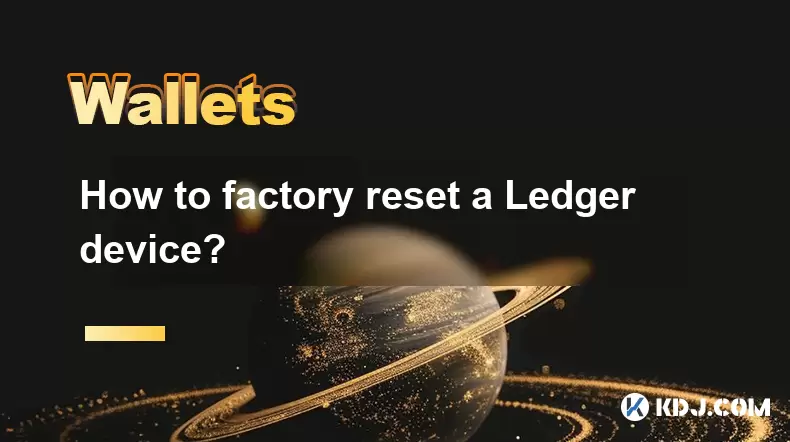-
 Bitcoin
Bitcoin $117,667.4663
1.73% -
 Ethereum
Ethereum $2,957.1186
0.44% -
 XRP
XRP $2.7338
7.75% -
 Tether USDt
Tether USDt $1.0003
0.04% -
 BNB
BNB $689.7326
0.83% -
 Solana
Solana $162.5487
-0.51% -
 USDC
USDC $1.0000
0.02% -
 Dogecoin
Dogecoin $0.2011
3.97% -
 TRON
TRON $0.3008
2.76% -
 Cardano
Cardano $0.7103
5.48% -
 Hyperliquid
Hyperliquid $46.2304
6.49% -
 Sui
Sui $3.3931
-2.05% -
 Stellar
Stellar $0.3604
19.00% -
 Bitcoin Cash
Bitcoin Cash $532.0019
2.82% -
 Chainlink
Chainlink $15.2750
0.50% -
 Avalanche
Avalanche $20.6882
0.39% -
 UNUS SED LEO
UNUS SED LEO $9.0322
0.01% -
 Hedera
Hedera $0.1940
2.63% -
 Shiba Inu
Shiba Inu $0.0...01328
0.22% -
 Toncoin
Toncoin $2.9554
0.77% -
 Litecoin
Litecoin $94.2893
-0.28% -
 Polkadot
Polkadot $3.9187
1.44% -
 Monero
Monero $329.4892
1.16% -
 Uniswap
Uniswap $8.7037
3.01% -
 Dai
Dai $1.0000
0.03% -
 Ethena USDe
Ethena USDe $1.0007
0.00% -
 Bitget Token
Bitget Token $4.5142
-1.64% -
 Pepe
Pepe $0.0...01238
0.86% -
 Aave
Aave $298.3707
-3.41% -
 Bittensor
Bittensor $392.6997
5.08%
How to factory reset a Ledger device?
A factory reset on a Ledger device restores it to its original state, removing all data but keeping the recovery phrase intact.
Jul 10, 2025 at 04:14 pm

What is a Factory Reset on a Ledger Device?
A factory reset on a Ledger device refers to the process of restoring the hardware wallet to its original, out-of-the-box state. This operation removes all user data, including installed apps, private keys, and custom settings. It is typically performed when a user wants to sell, gift, or troubleshoot their device. Performing a factory reset ensures that no sensitive information remains on the device after the procedure.
It is important to note that a factory reset does not delete the recovery phrase associated with any cryptocurrency accounts. Users must securely store this 12- or 24-word phrase separately before initiating the reset.
Why Would You Perform a Factory Reset?
There are several reasons why a user might want to perform a factory reset on a Ledger device:
- Selling or transferring ownership of the device
- Troubleshooting software issues, such as app crashes or firmware errors
- Removing personal data for privacy or security reasons
- Starting fresh after experimenting with multiple cryptocurrencies
Before proceeding, users should be aware that a factory reset cannot be undone without reconfiguring the device from scratch. Therefore, ensuring that all necessary backups are in place is crucial.
Preparing for a Factory Reset
Before performing a factory reset, users must take specific precautions to avoid losing access to funds:
- Back up your recovery phrase: The recovery phrase is essential for restoring access to your cryptocurrency wallets after resetting the device.
- Ensure the device is fully charged: A low battery during the reset process could lead to complications.
- Disconnect from third-party applications: Close any open connections via Ledger Live or other wallet services.
- Confirm you do not have any pending transactions: Ensure all transfers are complete and confirmed on the blockchain.
Failure to follow these steps may result in permanent loss of funds or an unstable device state.
How to Factory Reset a Ledger Nano S or Nano X
To perform a factory reset on a Ledger Nano S or Nano X, follow these detailed steps:
- Power off the device by holding the button until the screen turns off
- Press and hold both buttons simultaneously while reconnecting the device to your computer via USB
- Keep holding the buttons until the Ledger logo appears on the screen
- Release the buttons once the logo appears
- Wait for the device to boot into recovery mode
- Follow the on-screen instructions within the Ledger Live application to confirm the reset
This method forces the device into a special mode where it allows a full reset of all stored data and settings.
Using the Ledger Live Application to Reset
The Ledger Live application provides a more user-friendly way to perform a factory reset:
- Connect your Ledger device to your computer using a USB cable
- Open the Ledger Live application
- Navigate to the Manager tab
- Scroll down and click on the "Factory reset" option
- Confirm the action by following the prompts on your device and computer
- Wait for the process to complete, which may take a few minutes
This method is particularly useful for users who prefer interacting through software rather than physical button combinations.
Post-Reset Setup and Configuration
After completing the factory reset, the Ledger device will function like new. To begin using it again:
- Set up a new PIN code
- Generate or restore a wallet using the recovery phrase
- Reinstall desired cryptocurrency apps through the Ledger Live Manager
- Verify that all balances and transaction histories are correctly restored
Users who intend to reuse the device should ensure that all apps are updated and compatible with the current firmware version.
Frequently Asked Questions (FAQs)
Can I recover my funds after a factory reset?
Yes, as long as you have your recovery phrase, you can restore access to your funds by setting up the device again and entering the phrase during the initialization process.
Will a factory reset remove my PIN?
Yes, a factory reset deletes all device settings, including the PIN code. After the reset, you will need to set up a new PIN when initializing the device.
Is it possible to reverse a factory reset?
No, a factory reset is irreversible. Once completed, all data stored on the device is permanently erased unless backed up externally.
Does a factory reset affect the firmware version?
No, a factory reset does not downgrade or upgrade the firmware. The device retains the most recent firmware version unless manually updated afterward.
Disclaimer:info@kdj.com
The information provided is not trading advice. kdj.com does not assume any responsibility for any investments made based on the information provided in this article. Cryptocurrencies are highly volatile and it is highly recommended that you invest with caution after thorough research!
If you believe that the content used on this website infringes your copyright, please contact us immediately (info@kdj.com) and we will delete it promptly.
- Binance, USD1, and Stablecoins: A New Yorker's Take on Crypto's Latest Drama
- 2025-07-12 07:10:12
- MSGA Token: Revolutionizing Wealth Management with AI and Global Assets
- 2025-07-12 06:30:11
- Meme Coins: Long-Term Potential and the 10X Dream
- 2025-07-12 07:10:12
- Arctic Pablo, Trump Coin, Crypto Coins: What's the Hype?
- 2025-07-12 06:50:12
- Omni Network (OMNI): Soaring Gains or Risky Business?
- 2025-07-12 06:30:11
- Bitcoin Blasts Past $118K: ETF Inflows and a Weak Dollar Fuel the Fire!
- 2025-07-12 06:50:12
Related knowledge

What is a hardware wallet's secure element
Jul 11,2025 at 10:14pm
What is a Hardware Wallet's Secure Element?A hardware wallet is one of the most secure ways to store cryptocurrencies. Unlike software wallets, which ...

How to add a new network to MetaMask
Jul 11,2025 at 11:42pm
Understanding the Need to Add a New NetworkWhen using MetaMask, a popular Ethereum-based cryptocurrency wallet, users often need to interact with diff...

How to add Ethereum L2 networks like Arbitrum to Trezor
Jul 11,2025 at 12:36am
What Is Ethereum L2 and Why Add It to Trezor?Ethereum Layer 2 (L2) networks, such as Arbitrum, are scaling solutions designed to reduce congestion on ...

What happens to my crypto if my Trezor device breaks
Jul 11,2025 at 01:49pm
Understanding Hardware Wallet FailureWhen you store cryptocurrency in a Trezor hardware wallet, the private keys are kept offline, offering a high lev...

How to find a specific receiving address on my Trezor
Jul 09,2025 at 10:36pm
Understanding the Purpose of a Receiving AddressA receiving address is a unique identifier used in blockchain networks to receive cryptocurrency. Each...

How to connect Trezor to Rabby wallet
Jul 09,2025 at 05:49am
What Is Trezor and Rabby Wallet?Trezor is a hardware wallet developed by SatoshiLabs that allows users to securely store their cryptocurrency assets o...

What is a hardware wallet's secure element
Jul 11,2025 at 10:14pm
What is a Hardware Wallet's Secure Element?A hardware wallet is one of the most secure ways to store cryptocurrencies. Unlike software wallets, which ...

How to add a new network to MetaMask
Jul 11,2025 at 11:42pm
Understanding the Need to Add a New NetworkWhen using MetaMask, a popular Ethereum-based cryptocurrency wallet, users often need to interact with diff...

How to add Ethereum L2 networks like Arbitrum to Trezor
Jul 11,2025 at 12:36am
What Is Ethereum L2 and Why Add It to Trezor?Ethereum Layer 2 (L2) networks, such as Arbitrum, are scaling solutions designed to reduce congestion on ...

What happens to my crypto if my Trezor device breaks
Jul 11,2025 at 01:49pm
Understanding Hardware Wallet FailureWhen you store cryptocurrency in a Trezor hardware wallet, the private keys are kept offline, offering a high lev...

How to find a specific receiving address on my Trezor
Jul 09,2025 at 10:36pm
Understanding the Purpose of a Receiving AddressA receiving address is a unique identifier used in blockchain networks to receive cryptocurrency. Each...

How to connect Trezor to Rabby wallet
Jul 09,2025 at 05:49am
What Is Trezor and Rabby Wallet?Trezor is a hardware wallet developed by SatoshiLabs that allows users to securely store their cryptocurrency assets o...
See all articles

























































































